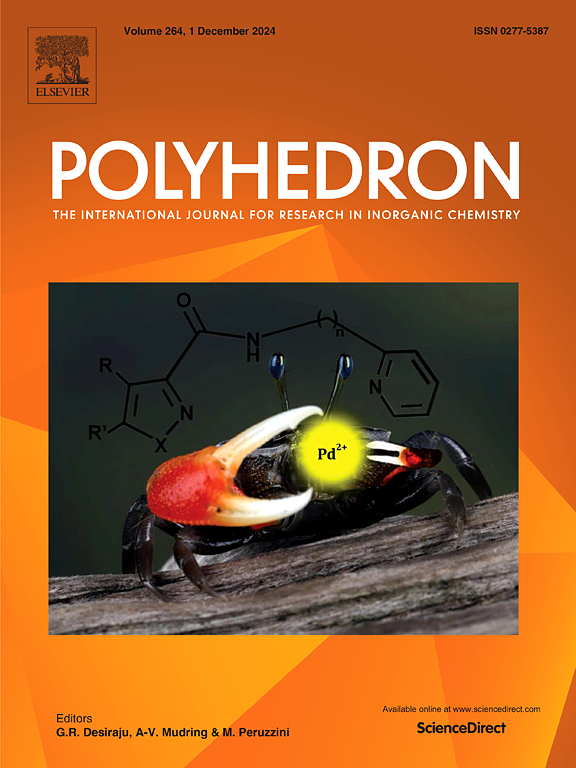Investigation on the magnetic relaxation mechanism and the magnetic coupling for a CoIII2CoIIDy single molecule magnet
IF 2.4
3区 化学
Q2 CHEMISTRY, INORGANIC & NUCLEAR
引用次数: 0
Abstract
A novel [CoIICoIII2Dy(HL)(H2L)(H3L)(hmp)3(NO3)](NO3)·3CH3OH·2H2O (1, H4L = 2-(((2-hydroxy-3-methoxyphenyl)methylene)amino)-2-(hydroxymethyl)-1,3-propanediol, Hhmp = 2-pyridinemethanol) complex and its diluted complex (2) were successfully obtained. One CoII, one CoIII, one DyIII and four O atoms in 1 formed a cubane missing one vertice, which was further linked with another CoIII by two O atoms from hmp− or HL3− ligand. 1 and 2 both exhibit field-induced single molecule magnet properties, with the effective energy barriers of 85.94 K and 58.03 K, respectively. Together with the theoretical calculations, this study indicated that intramolecular magnetic interactions within 1 can suppress QTM and can enhance SMM performance of 1. Moreover, the critical angle of 109.59° for the CoII⋯GdIII pair transformed from ferromagnetic coupling to antiferromagnetic coupling was first determined by DFT calculations.

CoIII2CoIIDy 单分子磁体的磁弛豫机制和磁耦合研究
本文章由计算机程序翻译,如有差异,请以英文原文为准。
求助全文
约1分钟内获得全文
求助全文
来源期刊

Polyhedron
化学-晶体学
CiteScore
4.90
自引率
7.70%
发文量
515
审稿时长
2 months
期刊介绍:
Polyhedron publishes original, fundamental, experimental and theoretical work of the highest quality in all the major areas of inorganic chemistry. This includes synthetic chemistry, coordination chemistry, organometallic chemistry, bioinorganic chemistry, and solid-state and materials chemistry.
Papers should be significant pieces of work, and all new compounds must be appropriately characterized. The inclusion of single-crystal X-ray structural data is strongly encouraged, but papers reporting only the X-ray structure determination of a single compound will usually not be considered. Papers on solid-state or materials chemistry will be expected to have a significant molecular chemistry component (such as the synthesis and characterization of the molecular precursors and/or a systematic study of the use of different precursors or reaction conditions) or demonstrate a cutting-edge application (for example inorganic materials for energy applications). Papers dealing only with stability constants are not considered.
 求助内容:
求助内容: 应助结果提醒方式:
应助结果提醒方式:


